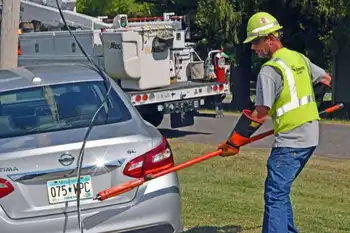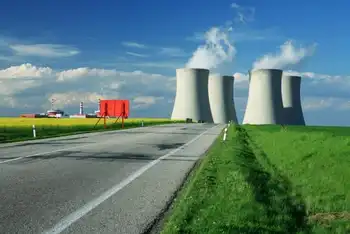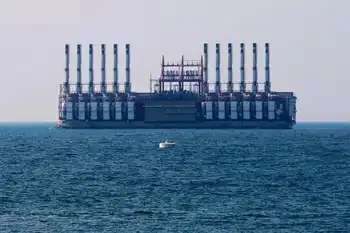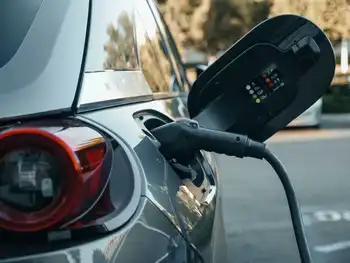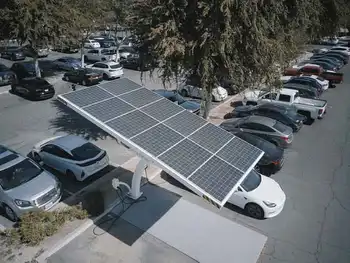EV sticker shock awaits U.S. consumers
By Reuters
Electrical Testing & Commissioning of Power Systems
Our customized live online or in‑person group training can be delivered to your staff at your location.

- Live Online
- 12 hours Instructor-led
- Group Training Available
Federal fuel economy standards and household budgets have been built around relatively simple measurements of how many miles vehicles can travel per gallon of gasoline, a number that features on a sticker displayed in the windows of new cars in U.S. showrooms.
So what should those stickers show for new battery-powered cars that will draw most or all of their power from the country's electricity grid?
General Motors Co brought urgent new attention to the issue when it said its upcoming Chevy Volt would get an unprecedented 230 miles per gallon in city driving.
But critics jumped on GM's claim for the Volt as an example of brash marketing and fuzzy math.
Even electric car boosters concede there is room for confusion.
"The sticker problem has not been solved yet," said Felix Kramer, head of California-based CalCars.org, a nonprofit advocacy group for plug-in electric vehicles.
Under current rules, Toyota Motor Corp's hybrid Prius, has been the mass-market fuel-efficiency leader.
The Prius is rated for a combined city and highway fuel economy rating of 50 miles per gallon under standards set by the U.S. Environmental Protection Agency.
But Toyota's rivals, led by GM, are already making claims for a still-unreleased of would-be Prius killers, rechargeable electric vehicles they say will get the equivalent of over 100 miles per gallon under still-evolving federal standards.
Those claims hinge on assumptions about how typical drivers will behave and unfamiliar concepts for most consumers, such as kilowatt hours of electricity.
GM's Volt is being designed to run 40 miles on battery power alone after recharging overnight. After that, a small gas-powered engine will kick in as a generator to keep its battery from running down further.
For GM, the attention generated by its striking claims about the Volt may have succeeded in moving discussion away from its recent bankruptcy filing and the financial crisis that preceded it.
The EPA said it has not yet tested the Volt and could not verify the 230 mile-per-gallon claim.
GM executives said they wanted to announce a preliminary mileage estimate based on the draft standards that will govern the Volt and other electric cars.
The automaker emerged from its fast-track bankruptcy in July under the majority ownership of the U.S. Treasury. Although the Volt is expected to lose money for GM, it remains the centerpiece of the automaker's effort to reinvent itself for skeptical U.S. consumers.
"We have a commitment to being transparent. This is something we probably would not have done before," GM product chief Tom Stephens said of the Volt mileage claim.
But Jonathan Linkov, who directs auto coverage for Consumer Reports, said the claim could confuse consumers about the costs of operating a car that will need to be both refueled at the pump and recharged overnight in a garage.
"Misleading announcements like this aren't helping anyone and they create risks when real-world tests are eventually performed," Linkov wrote. "What if the Volt doesn't live up to the hype?"
Nissan Motor Co Ltd also jumped into the fray, saying its all-electric compact Leaf will get a whopping 367 miles per gallon in combined highway and city driving.
Experts concede that part of the problem is that American consumers are only accustomed to thinking about fuel economy in miles per gallon of gasoline.
"We're stuck with miles per gallon," said Michael Duoba, a research engineer at the Argonne National Laboratory near Chicago, who heads a committee helping to craft the new U.S. standards to measure the performance of electric cars.
"It's an upside-down metric. We should be using fuel consumption, not fuel economy," said Duoba.
Other green car advocates hope regulators will move toward a more comprehensive measure of the total cost of operating battery-powered cars and the environmental cost of generating electricity for them.
"The consumer wants a meaningful number of how much a mile of driving for them will cost. That is what I hope the Environmental Protection Agency comes up with," said Kramer.
In the meantime, Duoba said he expected that the Volt would get mileage in the range of a conventional hybrid like the Prius in longer-range highway driving.
The 230-mile-per-gallon figure is based on a survey of typical driving habits conducted by the U.S. Department of Energy in 2001. The government found that 75 percent of U.S. drivers travel less than 40 miles daily, he said.
"It's critical that the public not get turned off because they are confused," Duoba added. "The goal is to find an honest description of new technology performance."





